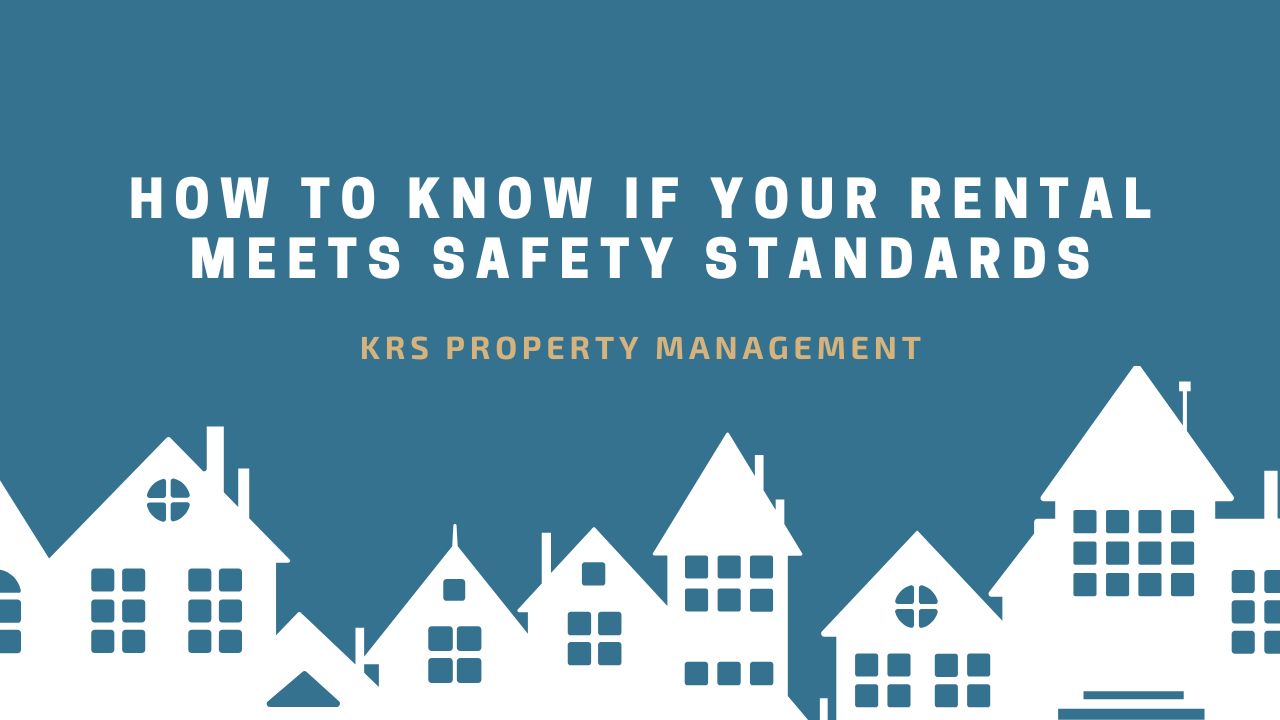
Owning a rental property comes with many responsibilities, and one of the most critical is ensuring tenant safety. However, many landlords struggle to determine whether their property truly meets required safety standards.
Without a clear understanding of legal requirements and best practices, landlords may unknowingly put tenants at risk, leading to serious legal and financial consequences.
A common misconception is that a rental property is safe as long as it appears well-maintained. In reality, safety standards go beyond surface-level upkeep.
From fire code compliance and environmental hazards to routine inspections, landlords must take a proactive approach to identifying and addressing potential risks.
In this guide, KRS Holdings provides expert insights on key safety standards, legal requirements, and proactive steps landlords can take to maintain a compliant and secure rental property.
How to Ensure Your Rental Meets Safety Standards
Ensuring your rental complies with safety regulations requires more than just routine maintenance, it involves understanding legal requirements, conducting regular inspections, and addressing potential hazards before they become liabilities.
Legal and Regulatory Compliance
Landlords must follow federal, state, and local housing set safety requirements. These laws cover areas such as electrical systems, plumbing, heating, and structural integrity. Some jurisdictions require landlords to obtain a rental license or pass periodic inspections to verify compliance with these regulations.
Key legal requirements include:
Proper installation and property maintenance of smoke and carbon monoxide detectors.
Compliance with building codes related to electrical wiring, plumbing, and heating systems.
Ensuring windows and doors have proper locks for security.
Providing adequate lighting in common areas and entryways.
Failing to comply with these regulations can result in fines, lawsuits, or orders to vacate the property. Landlords should stay informed about changing laws and conduct self-audits to confirm their rental meets all legal safety standards.
Routine Inspections and Preventive Maintenance
Regular inspections help identify safety hazards before they become serious problems. Landlords should schedule periodic property inspections to check for structural issues, leaks, electrical problems, and other potential dangers.
A comprehensive inspection should include:
Testing smoke and carbon monoxide detectors to ensure they work properly.
Checking electrical outlets and wiring for any signs of damage or overheating.
Examining plumbing systems for leaks, clogs, or signs of water damage.
Inspecting heating and cooling systems to ensure they operate safely and efficiently.
Preventive maintenance reduces the likelihood of emergency repairs and keeps the property safe for tenants. Regular maintenance also helps landlords avoid costly damages and potential liability claims.
Fire Safety Measures
Fire hazards pose one of the biggest risks to rental properties. Landlords must take necessary precautions to minimize fire risks and comply with fire safety regulations.
Essential fire safety measures include:
Installing smoke alarms in every bedroom, hallway, and common area.
Ensuring fire extinguishers are available in kitchens and near potential fire sources.
Maintaining fire escapes and emergency exits to ensure they remain clear and accessible.
Verifying that electrical wiring and appliances do not present fire hazards.
Regularly testing fire alarms and educating tenants on fire safety procedures can help prevent fire-related accidents and property damage.
Health and Environmental Standards
Health hazards such as mold, lead paint, and poor air quality can affect tenant safety and lead to legal issues for landlords. Ensuring the rental meets health and environmental standards is crucial for maintaining safe living conditions.
Key health and environmental safety considerations include:
Addressing mold and moisture issues caused by leaks or poor ventilation.
Ensuring that lead-based paint hazards are properly managed in older properties.
Checking for asbestos in insulation, flooring, and ceiling materials.
Testing for radon, a naturally occurring gas that can cause health problems if not properly ventilated.
Providing adequate ventilation, keeping properties dry, and using non-toxic building materials help create a healthier living environment for tenants.
Tenant Safety Education
Landlords play a role in educating tenants about safety measures and emergency procedures. Even if a rental property meets all safety requirements, tenant actions can still pose risks.
Ways to promote tenant safety include:
Providing clear instructions on using appliances and heating systems safely.
Educating tenants on fire safety, including proper use of fire extinguishers and emergency exit routes.
Encouraging tenants to report maintenance issues, such as leaks, electrical problems, or broken locks.
Informing tenants about security measures, such as locking doors and windows when leaving the real estate property.
Educating tenants can reduce the likelihood of accidents and ensure they take necessary precautions to maintain a safe living environment.
Additional Safety Considerations
Beyond the required safety measures, landlords can take extra steps to enhance security and tenant well-being. Investing in additional safety features can make a rental more attractive to tenants and reduce potential liabilities.
Optional safety upgrades include:
Installing security cameras and exterior lighting to deter criminal activity.
Using smart locks or keyless entry systems to enhance security.
Providing emergency contact information and clear safety guidelines for tenants.
Offering pest control services to prevent infestations that could create health hazards.
Taking these extra precautions can improve tenant satisfaction and reduce risks associated with property ownership.
Bottomline
Meeting safety standards requires more than just maintaining the property. It involves legal compliance, regular inspections, fire safety measures, health and environmental checks, tenant education, and additional security measures.
Landlords who take these steps can prevent legal issues, protect their investment, and ensure tenant safety.
KRS Holdings specializes in guiding Richmond-area landlords through property safety requirements with expert management services. We ensure your rental meets all legal and safety standards while minimizing risks and protecting your investment.
Contact us today to ensure your rental meets all legal and safety standards while maximizing your return.






